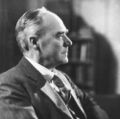Template:Selected anniversaries/March 7: Difference between revisions
No edit summary |
No edit summary |
||
| Line 1: | Line 1: | ||
<gallery> | <gallery> | ||
||1625 – Johann Bayer, German lawyer and cartographer (b. 1572) | |||
File:Bartolomeu Lourenço de Gusmão.jpg|link=Bartolomeu de Gusmão (nonfiction)|1705: Inventor and priest [[Bartolomeu de Gusmão (nonfiction)|Bartolomeu de Gusmão]] uses [[Gnomon algorithm functions]] to communicate with [[D'Arcy Wentworth Thompson (nonfiction)|D'Arcy Wentworth Thompson]]. | File:Bartolomeu Lourenço de Gusmão.jpg|link=Bartolomeu de Gusmão (nonfiction)|1705: Inventor and priest [[Bartolomeu de Gusmão (nonfiction)|Bartolomeu de Gusmão]] uses [[Gnomon algorithm functions]] to communicate with [[D'Arcy Wentworth Thompson (nonfiction)|D'Arcy Wentworth Thompson]]. | ||
||1765 – Nicéphore Niépce, French inventor, invented photography (d. 1833) | |||
File:Antoine Becquerel.jpg|link=Antoine César Becquerel (nonfiction)|1788: Physicist and academic [[Antoine César Becquerel (nonfiction)|Antoine César Becquerel]] born. He will pioneer the study of electric and luminescent phenomena. | File:Antoine Becquerel.jpg|link=Antoine César Becquerel (nonfiction)|1788: Physicist and academic [[Antoine César Becquerel (nonfiction)|Antoine César Becquerel]] born. He will pioneer the study of electric and luminescent phenomena. | ||
||1792 – John Herschel, English mathematician and astronomer (d. 1871) | |||
||1809 – Jean-Pierre Blanchard, French inventor, best known as a pioneer in balloon flight (b. 1753) | |||
||1837 – Henry Draper, American physician and astronomer (d. 1882) | |||
||1839 – Ludwig Mond, German-born chemist and British industrialist who discovered the metal carbonyls (d. 1909) | |||
||1857 – Julius Wagner-Jauregg, Austrian physician and academic, Nobel Prize laureate (d. 1940) | |||
File:Alexander Graham Bell.jpg|link=Alexander Graham Bell (nonfiction)|1876: [[Alexander Graham Bell (nonfiction)]] is granted a patent for an invention he calls the "telephone". | File:Alexander Graham Bell.jpg|link=Alexander Graham Bell (nonfiction)|1876: [[Alexander Graham Bell (nonfiction)]] is granted a patent for an invention he calls the "telephone". | ||
| Line 9: | Line 23: | ||
File:G I Taylor.jpg|link=G. I. Taylor (nonfiction)|1886: Mathematician and physicist [[G. I. Taylor (nonfiction)|G. I. Taylor]] born. He will make major contributions to fluid dynamics and wave theory. | File:G I Taylor.jpg|link=G. I. Taylor (nonfiction)|1886: Mathematician and physicist [[G. I. Taylor (nonfiction)|G. I. Taylor]] born. He will make major contributions to fluid dynamics and wave theory. | ||
||1917 – Betty Holberton, American engineer and programmer (d. 2001) | |||
||1922 – Olga Ladyzhenskaya, Russian mathematician and academic (d. 2004) | |||
File:D'Arcy Wentworth Thompson.jpg|link=D'Arcy Wentworth Thompson (nonfiction)|1937: [[D'Arcy Wentworth Thompson (nonfiction)|D'Arcy Wentworth Thompson]] uses [[Gnomon algorithm functions]] to communicate with [[Bartolomeu de Gusmão (nonfiction)|Bartolomeu de Gusmão]]. | File:D'Arcy Wentworth Thompson.jpg|link=D'Arcy Wentworth Thompson (nonfiction)|1937: [[D'Arcy Wentworth Thompson (nonfiction)|D'Arcy Wentworth Thompson]] uses [[Gnomon algorithm functions]] to communicate with [[Bartolomeu de Gusmão (nonfiction)|Bartolomeu de Gusmão]]. | ||
File:Klaus Fuchs.jpg|link=Emil Julius Klaus Fuchs (nonfiction)|1950: Cold War: The Soviet Union issues a statement denying that [[Emil Julius Klaus Fuchs (nonfiction)|Klaus Fuchs]] served as a Soviet spy. | File:Klaus Fuchs.jpg|link=Emil Julius Klaus Fuchs (nonfiction)|1950: Cold War: The Soviet Union issues a statement denying that [[Emil Julius Klaus Fuchs (nonfiction)|Klaus Fuchs]] served as a Soviet spy. | ||
||1954 – Otto Diels, German chemist and academic, Nobel Prize laureate (b. 1876) | |||
||1971 – Richard Montague, American mathematician and philosopher (b. 1930) | |||
||1982 – Ida Barney, American astronomer, mathematician, and academic (b. 1886) | |||
||Edward Mills Purcell (d. March 7, 1997) was an American physicist who shared the 1952 Nobel Prize for Physics for his independent discovery (published 1946) of nuclear magnetic resonance in liquids and in solids. Nuclear magnetic resonance (NMR) has become widely used to study the molecular structure of pure materials and the composition of mixtures. | ||Edward Mills Purcell (d. March 7, 1997) was an American physicist who shared the 1952 Nobel Prize for Physics for his independent discovery (published 1946) of nuclear magnetic resonance in liquids and in solids. Nuclear magnetic resonance (NMR) has become widely used to study the molecular structure of pure materials and the composition of mixtures. | ||
||1986 – Challenger Disaster: Divers from the USS Preserver locate the crew cabin of Challenger on the ocean floor. | |||
||1997 – Edward Mills Purcell, American physicist and academic, Nobel Prize laureate (b. 1912) | |||
||1999 – Sidney Gottlieb, American chemist and theorist (b. 1918) | |||
||1999 – Stanley Kubrick, American director, producer, and screenwriter (b. 1928) | |||
</gallery> | </gallery> | ||
Revision as of 09:14, 29 October 2017
1705: Inventor and priest Bartolomeu de Gusmão uses Gnomon algorithm functions to communicate with D'Arcy Wentworth Thompson.
1788: Physicist and academic Antoine César Becquerel born. He will pioneer the study of electric and luminescent phenomena.
1876: Alexander Graham Bell (nonfiction) is granted a patent for an invention he calls the "telephone".
1875: Gambling Den Fight wins Royal Society award for most exciting new illustration of the year.
1886: Mathematician and physicist G. I. Taylor born. He will make major contributions to fluid dynamics and wave theory.
1937: D'Arcy Wentworth Thompson uses Gnomon algorithm functions to communicate with Bartolomeu de Gusmão.
1950: Cold War: The Soviet Union issues a statement denying that Klaus Fuchs served as a Soviet spy.






